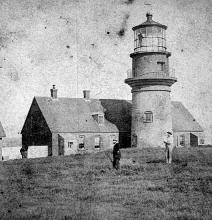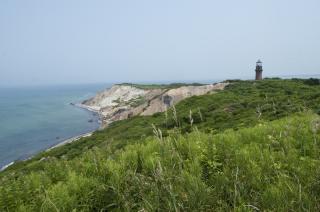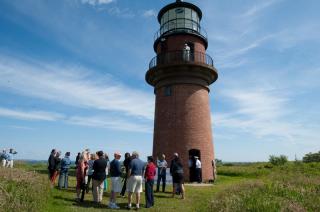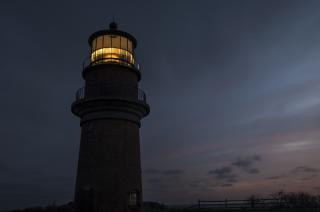Gay Head Light
2013
Stand on the north shore of the Vineyard at any point as the sun begins to set and look to the west. As the last light of day floods the land and sea, in the distance you will see the silhouette of the lighthouse, a lonely sentinel standing on a promontory of land at the westernmost edge of the Vineyard.
The General Services Administration has received three letters of interest for ownership of the Gay Head Light, as planning and fundraising efforts get under way to move the lighthouse which is threatened by severe erosion. The lighthouse has been declared surplus property and the town of Aquinnah hopes to take ownership of the historic tower.
One of the letters of interest is from the town and was sent earlier this month.
This is not just a story, it's a love story. In 1799 President John Adams commissioned the building of an eight-sided wooden lighthouse which marked the birth of the Gay Head Light.
The federal government formally declared the Gay Head Light surplus property Thursday, clearing the way for the town of Aquinnah to take ownership of the lighthouse which is now critically endangered due to erosion.
The General Services Administration posted the notice Thursday, making the lighthouse surplus property. Aquinnah voters have already agreed that the town will apply to take ownership.
The National Trust for Historic Preservation announced in a ceremony at the Gay Head Cliffs Wednesday morning that it had named the Gay Head Light to its 2013 list of America’s 11 Most Endangered Historic Places.
Members of a town committee charged with organizing the move of the Gay Head Light learned this week that they are not alone in their plight during a presentation about a project to move the Sankaty Head Light on Nantucket six years ago.






